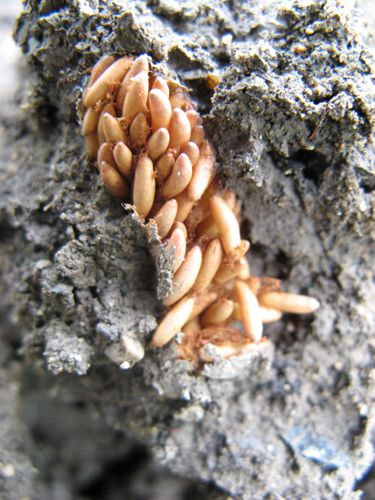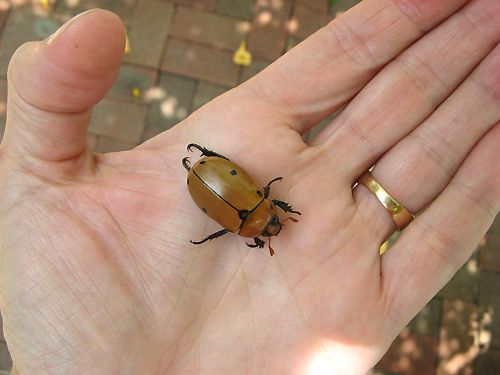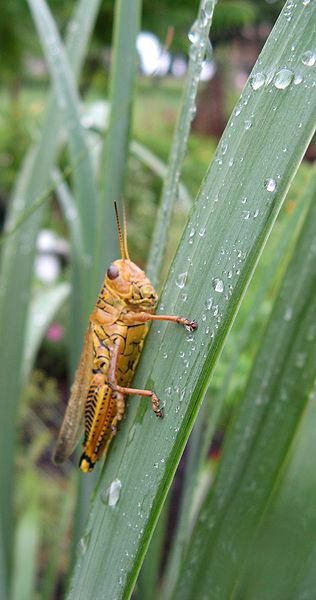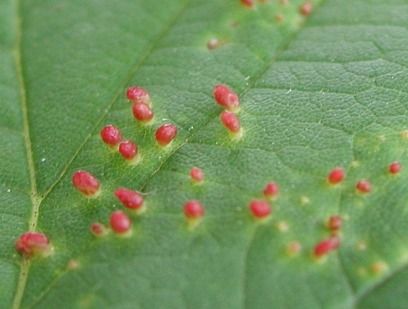Glen Arnold was our first instructor of the day, talking to us about raised vegetable gardening. We have a few raised beds, which I love and wish I had more of. One of the best things about raised beds is that the soil dries out earlier in the spring, due to better drainage, meaning earlier planting.
In the afternoon, Dr. Curtis Young taught entomology, which I was really looking forward to. I think insects are COOL. I didn't always feel this way, even though I once had a pet tarantula named Madeline. The girls had given her to me for Mother's Day many years ago and I had her for about five years. At the time, I had a morbid fear of spiders, but she was awesomely cool, especially when she was in her terrarium.
If you don't like insects, you'll likely find that aspect of gardening a little bit unpleasant. But for me, this was yet another part of gardening besides the actual garden itself that I embraced. When you are on your hands and knees and come face to face with insects on a regular basis, you'd better learn to be friends with them.
There are those insects that are just plain annoying, though. I could certainly live for the rest of my born days without earwigs. Ugh. But I have been known to bring the more interesting ones into the house for a little show and tell with Romie.
Grapevine beetle
(Pelidnota punctata)
 Two of the many mysteries here at Our Little Acre were solved by Dr. Young this afternoon. One spring, about three years ago, I was planting something out in Max's Garden when I unearthed a cluster of elongated eggs. I wondered what they were and if they were eggs of something good or something undesirable from a gardener's perspective. I didn't know, so I took a picture, then covered them back up, just in case they were a good thing.
Two of the many mysteries here at Our Little Acre were solved by Dr. Young this afternoon. One spring, about three years ago, I was planting something out in Max's Garden when I unearthed a cluster of elongated eggs. I wondered what they were and if they were eggs of something good or something undesirable from a gardener's perspective. I didn't know, so I took a picture, then covered them back up, just in case they were a good thing.Knowing what I know now, as a result of our class, I should have smooshed them. It turns out that they were the eggs of the Differential Grasshopper (Melanoplus differentialis), those disgusting things that like to have food orgies in the garden, then commit suicide on the windshield of your car as you drive down the road in late summer.
Differential Grasshopper(Melanoplus differentialis)
The other mystery concerned a couple of our maple trees and the tiny round galls that we get every year on its leaves. They start out green, like the leaves they're on, then turn red. The tree never seems to mind having them, but they sure make the leaves look odd.
Maple bladder galls
These are bladder galls, which house the maple bladder gall mite. The mite itself is on the underside of the leaf and is microscopic in size. The gall forms on the upper side of the leaf. They generally affect leaves of the sugar, silver and red maple trees and don't usually affect the health of the tree.
Other interesting facts we learned today:
- 10 quintillion insects are alive on the earth on any given day. 10 quintillion looks like this: 10,000,000,000,000,000,000. Or this:1019.
- 1 in 6 people are affected by insect borne disease.
- 20% of crops grown worldwide are eaten by insects.
- Those ankle-biting flies in summer? Stable flies, not house flies. House flies don't bite.
- Only three animals have wings: birds, bats, and insects.
- Honey is bee vomit. (And I love to eat it.)
- Honeybees in the United States are not native. They're from Europe.
- Malaria is the number one killer of humans worldwide.
- When it comes to genetics, the most studied insect is the fruit fly.
_____________________________________
Photo of maple bladder gall from Oregon State University.




















 "Bejeweled"
"Bejeweled"



10 comments:
Your description of the life cycle of the Differential Grasshopper made me laugh out loud. It is right on target.
I love the springy look of your blog Kylee. It sounds like you had a very interesting class today. I have embraced the insects in our garden. I am quite amused by them. Or as you say most of them. We have had the grapevine beetle in our garden too. We don't have grapvines though.
Kylee girl ... that was really interesting ! Thanks for all of the information : )
Was there any advice on those horrible Japanese beetles that eat our lilies uo ? Was neem oil mentioned at all ?
I was doing well with getting over the insect stats until the vomit thing came up with the bees .. I love honey too and that won't stop me from having it .. but I will have to keep the description of vomit OUT of my head while eating it ?? LOL
Joy
Honey bees not being native is why organic garden supply places sell Mason Bees for polinators. Mason Bees are actually better polinators, less aggressive, and native.
Kylee, thank you for educating us! I've learned several new things from this post. But, what impressed me the most, was the fact that your girls gave you a tarantula!!! What should I expect from my boys?!
Have fun in your II class! :-) Fun insect facts. (Fruit flies... pesty little fellows!)
Interesting post. I will be looking for elongated eggs.
Great info!
You really had a tarantula? I'm impressed! :-)
I had those same spots on my maple trees. I wondered what it was.
I will be looking for the grasshopper eggs now too.
I had those same spots on my maple trees. I wondered what it was.
I will be looking for the grasshopper eggs now too.
Post a Comment